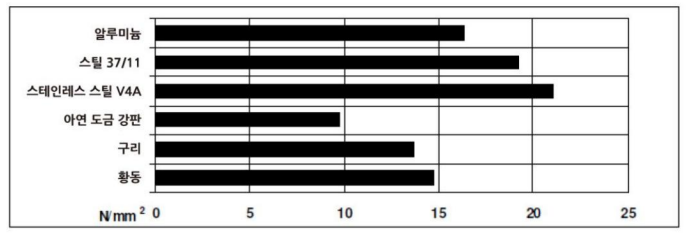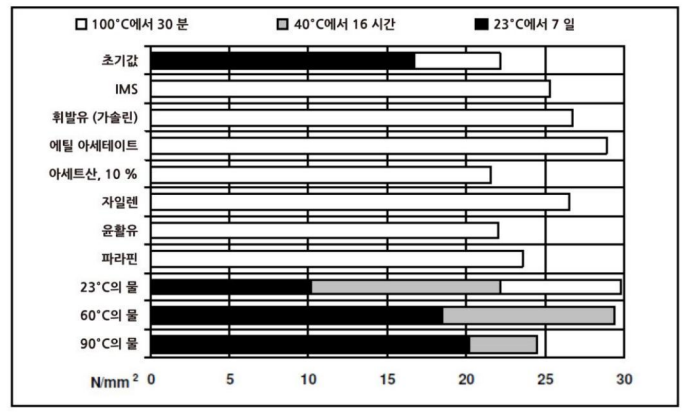Enhanced TDS
Identification & Functionality
- Chemical Family
- RTU Product Type
- Technologies
- Product Families
Features & Benefits
- Ready-to-Use Product Features
Applications & Uses
- Application Method
- Compatible Substrates & Surfaces
- Applications
- The resin/hardener mix is applied with a spatula, to the pretreated and dry joint surfaces.
- A layer of adhesive 0.05 to 0.10 mm thick will normally impart the greatest lap shear strength to the joint.
- The joint components should be assembled and clamped as soon as the adhesive has been applied.
- An even contact pressure throughout the joint area will ensure optimum cure.
- Processing Information
Pretreatment
- The strength and durability of a bonded joint are dependant on proper treatment of the surfaces to be bonded.
- At the very least, joint surfaces should be cleaned with a good degreasing agent such as acetone, iso-propanol (for plastics) or other proprietary degreasing agents in order to remove all traces of oil, grease and dirt. Low grade alcohol, gasoline (petrol) or paint thinners should never be used.
- The strongest and most durable joints are obtained by either mechanically abrading or chemically etching (“pickling”) the degreased surfaces.
- Abrading should be followed by a second degreasing treatment
Mix Ratio Parts by Weight Parts by Volume
Araldite® AW 136H 100 100 Hardener HW 5067 29 38 - Resin and hardener should be blended until they form a homogeneous mix.
- Resin and hardener are also available in cartridges incorporating mixers and can be applied as ready-to-use adhesive.
Mechanical processing
- Specialist firms have developed metering, mixing and spreading equipment that enables the bulk processing of adhesive.
Equipment maintenance
- All tools should be cleaned with hot water and soap before adhesives residues have had time to cure.
- The removal of cured residues is a difficult and time-consuming operation.
- If solvents such as acetone are used for cleaning, operatives should take the appropriate precautions and, in addition, avoid skin and eye contact.
Minimum recommended cure cycles
Temperature (°C) 10°C 15°C 23°C 40°C 60°C 100 LSS > up to 1MPa (hours) 17 12 5 - - Cure Time (minutes) - - - 80 18 4 LSS > up to 1MPa (hours) 32 17 7 2 - - Cure Time (minutes) - - - - 26 5 LSS = Lap shear strength.
Full curing : The adhesive will give good performance after cure at room temperature but to achieve optimal temperature performance a short post cure at 50 - 100°C is advised.
Properties
- Physical Form
Technical Details & Test Data
- Product Properties
- Excellent chemical resistance
- Performance at up to 100°C
- Performance further enhanced by post curing at 50 - 100°C
- Viscous liquid for easy application
- Cured Properties
Unless otherwise stated, the figures below are for standard specimens made from lap jointed aluminum alloy 170 X 25 X 1.5 mm strip.
Tested and measured. Joints are 12.5 x 25 mm each. The figures are typical production results using standard test methods
Determined by measuring batches. These figures are provided for technical information only and do not constitute product specifications.
Average lap shear strength of typical metal-to-metal joints (ISO 4587) (typical average values)
Cured at 40°C for 16 hours and measured at 23°C
Pretreatment - Sandblasting

Average lap shear strength of typical metal-to-metal joints (ISO 4587) (typical average values)
Cured at 100°C for 30 minutes and measured at 23°C
Pretreatment - Sandblasting

Lap shear strength versus temperature (ISO 4587) (typical average values)
Curing: (a) = 7 days at 23°C; (b) = 24 hours at 23°C + 30 minutes at 80°C

Roller Peel Test (ISO 4578) (typical average values) Cured at 40°C for 16 hours: 3.9 N / mm
Roller Peel Test (ISO 4578) (typical average values) Curing at 80ÿ for 40 minutes: 4.1 N / mm
Glass transition temperature (DSC) (typical average) (ISO 11357-2)
Curing: 24 hours at 23°C + 40 minutes at 80°C: 82°C
Curing: 16 hours at 40°C: 67°C
Curing: 7 days at 23°C: 47°C
Lap shear strength vs. immersion in various media (ISO 4587) (typical average values)
Unless otherwise stated, LSS was determined after immersion at 23°C for 90 days.

Lap shear strength vs. thermal ageing (ISO 4587) (typical average values)
Curing: 16 hours at 40°C; measured at 23°C

Lap shear strength vs. tropical weathering (ISO 4587) (typical average values) Curing: 16 hours at 40°C; measured at 23°C (40/92, DIN 50015; typical average value)
Curing: 16 hours at 40°C; measured at 23°C

Storage & Handling
- Storage and Handling Precautions
Storage
- Araldite® AW 136H and Hardener HW 5067 must be stored at room temperature provided the components are stored in sealed containers.
Handling Precautions
- Our products are generally quite harmless to handle provided that certain precautions normally taken when handling chemicals are observed.
- The uncured materials must not, for instance, be allowed to come into contact with foodstuffs or food utensils, and measures should be taken to prevent the uncured materials from coming in contact with the skin, since people with particularly sensitive skin may be affected.
- The wearing of impervious rubber or plastic gloves will normally be necessary; likewise the use of eye protection.
- The skin should be thoroughly cleansed at the end of each working period by washing with soap and warm water.
- The use of solvents is to be avoided. Disposable paper - not cloth towels - should be used to dry the skin.
- Adequate ventilation of the working area is recommended.
Other
- Application Information
Value Units Test Method / Conditions Mix Ratio 0.29 %(W) %(W) Hardener : Resin - Physical Properties
Value Units Test Method / Conditions Specific Gravity approx. 1.2 - Viscosity approx. 10.0 Pa.s Pa.s at 25°C
